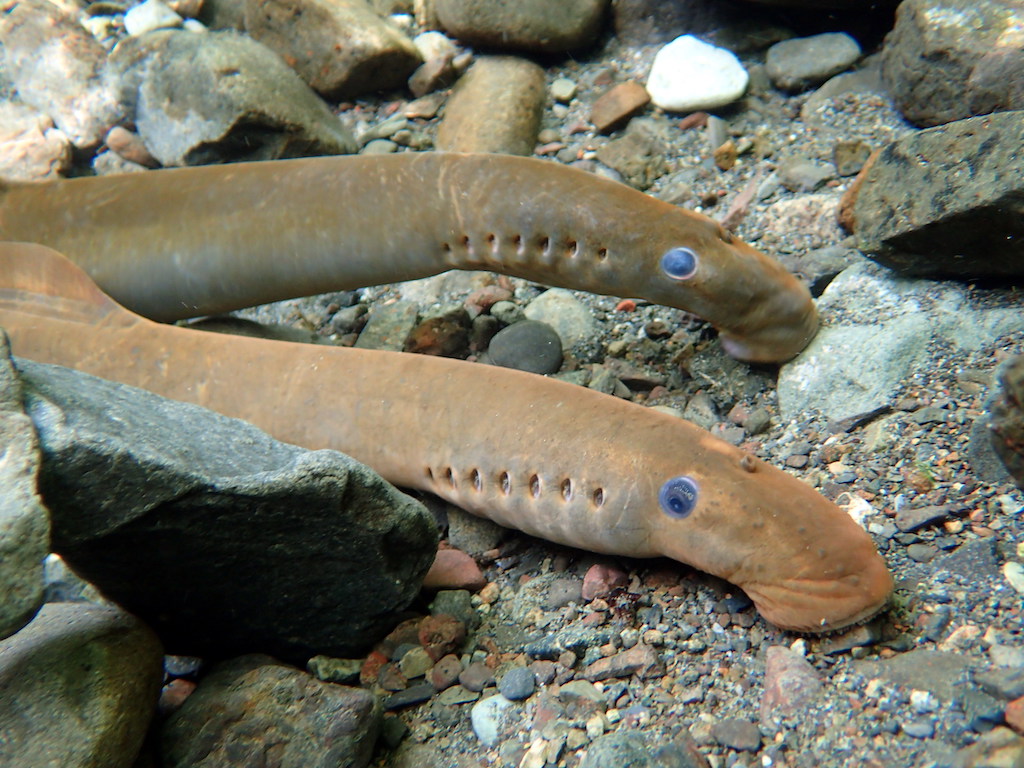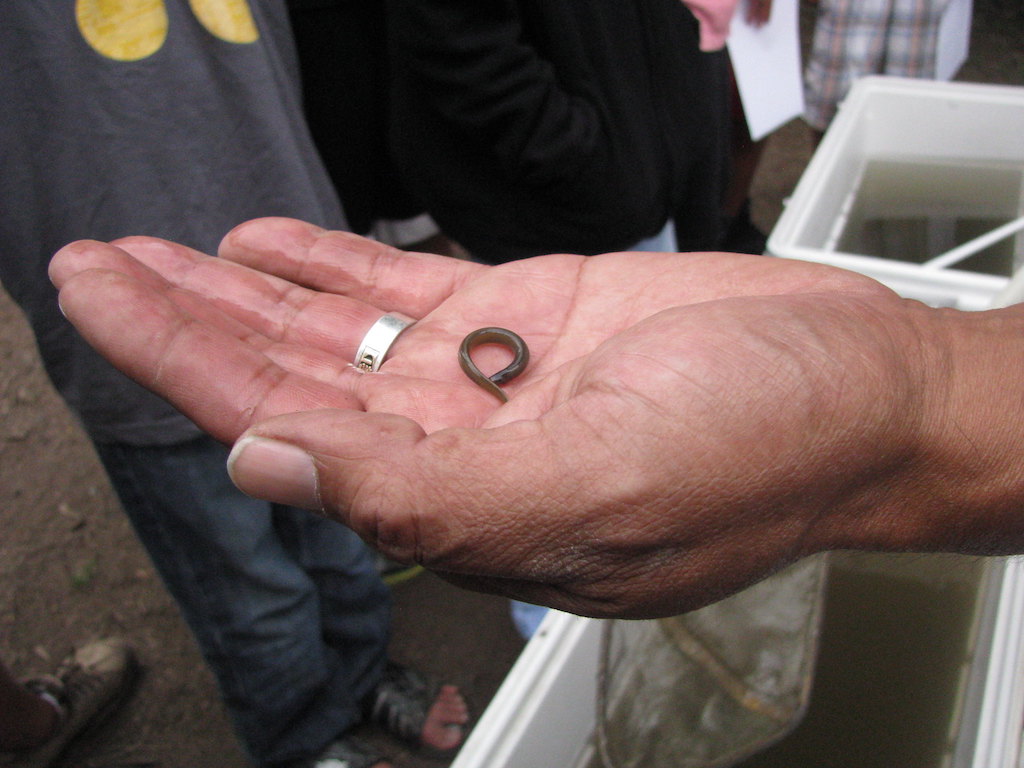The Pacific lamprey, a native eel-like fish wiped out by construction of the Elwha dams, is making an extraordinary comeback today, adding to species diversity in the river and increasing the food supply for other aquatic creatures.
Lamprey as a species have been largely ignored, even despised at times, while major ecosystem-restoration projects throughout the Northwest have focused on the needs of salmon. The black, slimy appearance of lamprey along with their parasitic nature do not help them forge a large fanbase, yet in recent years fisheries biologists have come to recognize the ecological importance of this ancient fish species.
“What I love about lamprey is that they are one of the oldest fish on Earth, and they are virtually unchanged from 360 million years ago,” said Rebecca Paradis Mahan, who studied lamprey as a biologist for the Lower Elwha Klallam Tribe. “They have persisted through time and massive habitat loss, and they are the rock stars of recolonization.”
Lamprey are important culturally to Native Americans, especially in the Columbia River system where tribes traditionally catch and eat them, as they have for centuries. As dams were built, they greatly inhibited lamprey migration and nearly drove the species to extinction.
By all accounts, Pacific lamprey, Entosphenus tridentatus, were abundant in the Elwha River before the dams were built, and they are still hanging on in most rivers on the Olympic Peninsula, said Mahan, who took a job last June as Clallam County’s habitat biologist. After dam removal, lamprey quickly moved upstream in the Elwha, where a growing number flourished in Indian Creek — above the lower Elwha Dam site — and a few migrated all the way upstream to Boulder Creek — beyond the upper Glines Canyon Dam site, she said.
“They were first seen in Indian Creek, where we saw spawned out adults in 2014,” she said. “That tells us that they went right up and into the creek.”
Typically, lamprey leave the saltwater and head into freshwater starting in the spring as they prepare to spawn. Swimming upstream, they eventually find a place to hide out, often under a rock, where they will wait until the following spring to find a mate. During this time, they live off their stored fat without eating. After spawning in the riverbed, adult lamprey soon die.
After about two weeks, larval lamprey, known as ammocoetes, hatch from the eggs and drift downstream until they come to silty sediment in which to burrow. The larvae are filter-feeders, consuming organic debris, algae and bacteria. They may live as ammocoetes for up to seven years and grow to about 6 inches before undergoing a dramatic physical restructuring, transforming from eyeless, wormlike filter-feeders to active, eyed predators. This juvenile stage then heads downstream to saltwater. They attach to fish, including salmon, flatfish, rockfish and hake, and occasionally marine mammals. The attachment does not seem to seriously injure most hosts, although they may display a scar on the skin where the lamprey hooked on with its mouth.



